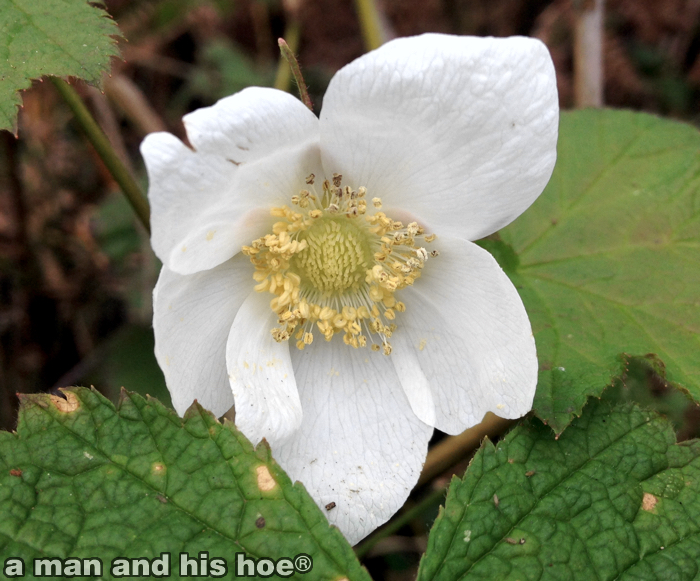Your cart is currently empty!
Month: October 2015
-
Who Made My …?
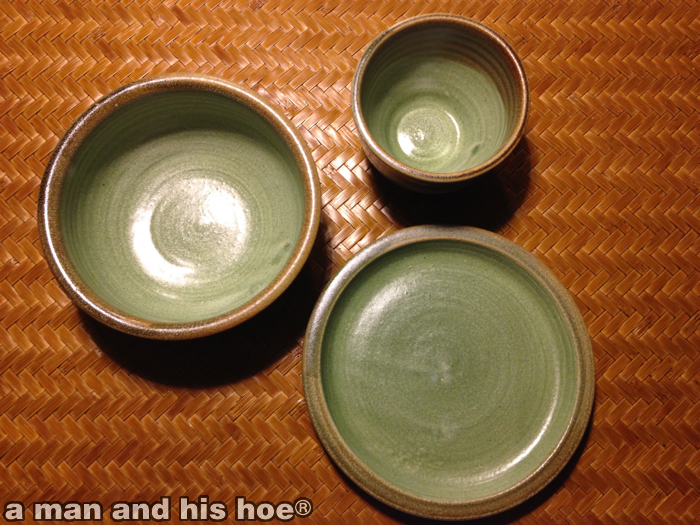
It all started a few months ago when I purchased two teacups at my local Skagit Valley Food Co-op. I liked them so much that the next time I was at the co-op, I asked one of the staff if they had a way to contact the Cheryl Harrison whose signature was on the bottom of the teacups.
“Yes, she works here,” they said. Wow! That surprised me. I found out which days and hours she worked, and I met her and asked if she made pottery on request. She did, and I took some pottery that I liked and gave her the sizes of the cups, plates, and bowls that I wanted.
I picked them up this week. It’s a delight having handmade dishes and knowing the person who made them. Each cut, plate, and bowl is slightly different. It’s refreshing setting the table and having pieces with personality.
It’s made me think how much we’ve lost with everything being mass produced, with everything being identical. A couple hundred years ago, you knew everyone who made your clothes, your dishes, your furniture. It was either yourself, or someone in your town. Today, most people have no personal connection with the people who made the things they use every day; their clothes, their shoes, their dishes, and the many other things they use.
One thing I’ve learned being at Bow Little Market this summer, is that if I look around, there are people nearby who make many of the things I use every day. It’s nice having a bowl of warm soup and knowing the person who crafted your bowl, and when I’m tossing a salad, knowing the person who made my salad fork and spoon. And they aren’t people who live in some far distant town, state, or country. They live nearby.

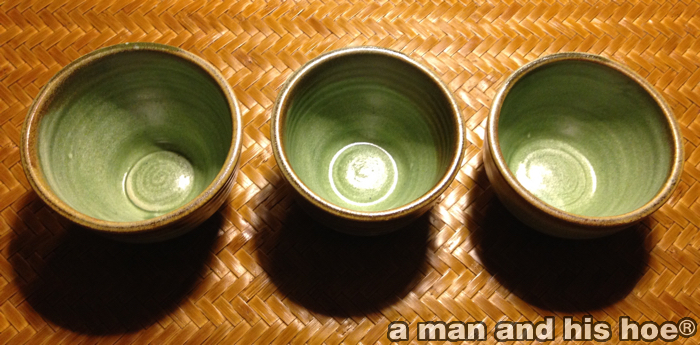
-
Intentions
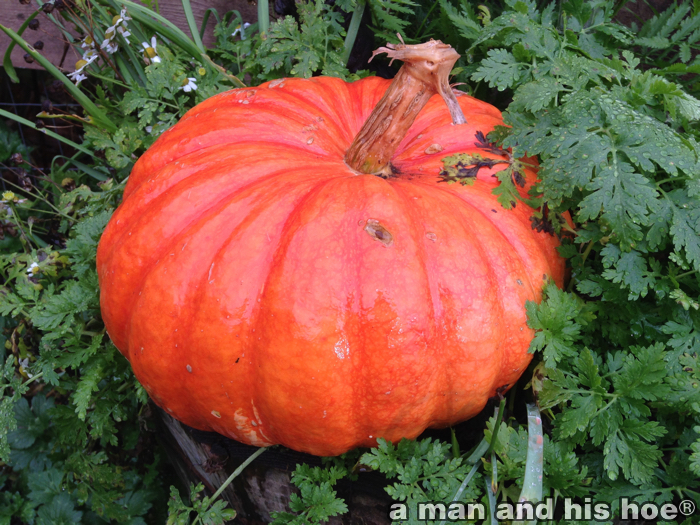
My intention was to turn this pumpkin into several dishes: pumpkin pie, roast pumpkin, pumpkin miso-ni, etc. It’s decorating the gateway instead. Maybe after halloween I can cut it up and eat it.
More pullets are laying now. For the first time in several months, there were more than a dozen eggs today. March and April are the peak of egg production for the flock here. By the end of June the count is noticeably lower, and it usually keeps going down until it picks up again after the New Year. This year, it is increasing early on account of new pullets wanting to lay eggs.
Supposedly hens need 14 hours of daylight in order to lay eggs. My experience is that this isn’t always the case. We are down to 11 hours of visible daylight now and will be down to 9 hours in late December. Even in the darkest days of winter, there are some hens laying eggs. Egg laying is very strong by early March when there are just 12 hours of visible light, so the 14 hour “rule” isn’t something my chickens know about. I won’t tell them. They don’t need another thing to worry about. “Oh, dear, there are just 10 hours of daylight and yet I’m laying eggs. Maybe there is something wrong with me? Should I go to the vet?” No, they don’t need to know that rule.
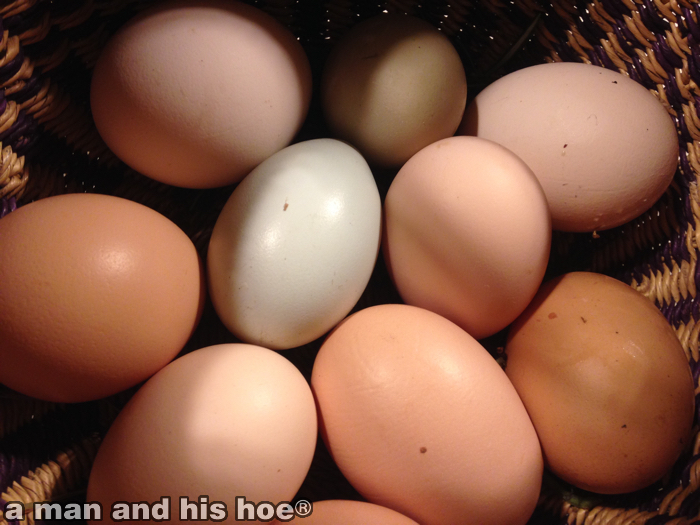
Each egg is so different. Rarely are there two eggs so similar they are hard to tell apart. Most eggs are distinct. Why do store eggs all look alike? Do they banish hens which have personality? What happens to those hens who lay eggs with a flare? I don’t want to think about it.

There is so much color this time of year. Mint never stops blooming once it starts. Maple leaves are turning a warm rust color. A row of freshly planted shallots and garlic turns into a quilt of many colors when I cover it with a thick layer of fall leaves.
I saw an article about a sweet potato farm in Japan started several hundred years ago. An integral part of the farm was a deciduous forest next to the fields. Over the centuries the farmers have continuously raked fallen leaves out of the forest and spread them over the fields. The result is that the soil in the fields is soft and many feet deep, letting oxygen filter deep into the ground and maintain a healthy biology for the sweet potatoes to grow.
In another row, a shallot planted several weeks ago is sprouting. Shallot sprouts are always fun to watch. Instead of a single stem poking up out of the ground like garlic, shallots send up whole hands of slender green fingers into the air.

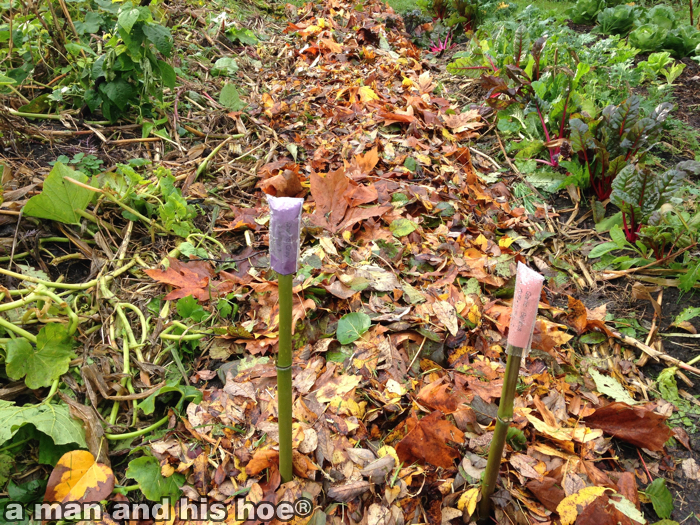
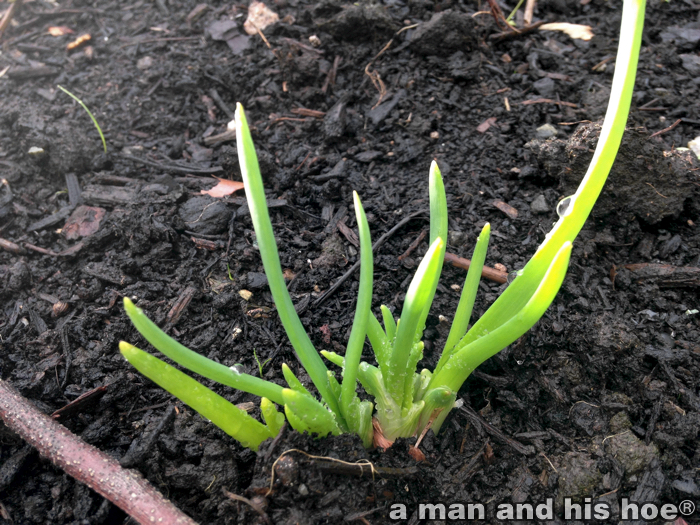
-
Worth Waking Up
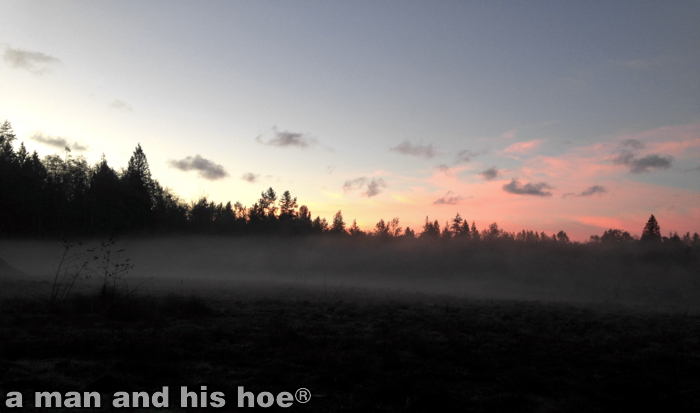
Any day that starts like this is a day worth waking up for. It’s late October and there are almost no clouds in the sky. A cool mist blankets the neighbor’s horse pasture, and as soon as the sun rises, it will float away (the mist not the pasture). Now you see it, now you don’t.
You often read about tourists flocking to see the fall colors in New England. Hordes of tourists from all over Asia sojourn to Japan to see the maples turn red and yellow. So how come there aren’t crowds thronging the vineyards in late fall to see the grape leaves turn? Grape leaves know how to party at the end of fall. They put on brilliant colors before they fall. Picnicking among the turning grape vines, bottles of wine in tow, that would be a lot of fun. Can’t you see vintners recommending certain wines over others when viewing red versus yellow grape vines?
Or should you drink the wine from that particular grape to truly appreciate the fall colors of that vine? Smell the wine, smell the leaves, can you detect the flavors of the wine in the leaf? You can’t? You need to drink more wine until you can.
Or you could have a taste test where you try and match the wine to the colorful leaves. Take a sip and guess which dried leaf made that wine.


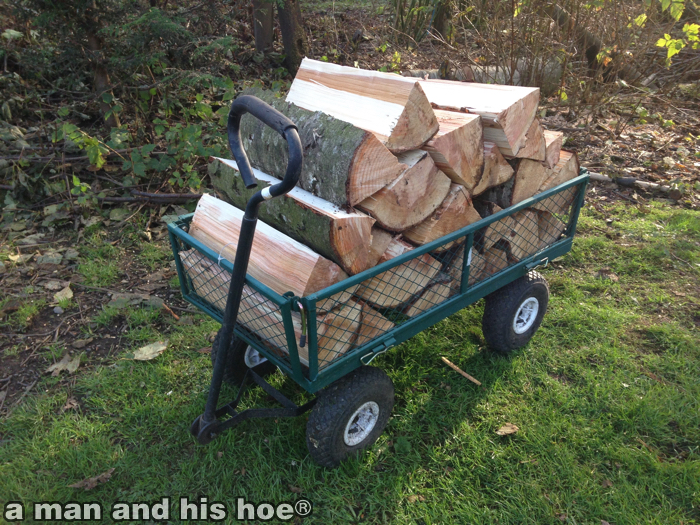
It was a perfect day for splitting more wood. Most likely, this will end up in next year’s wood stack. There’s enough stacked for this winter. It’s time to start working on next winter’s stacks.
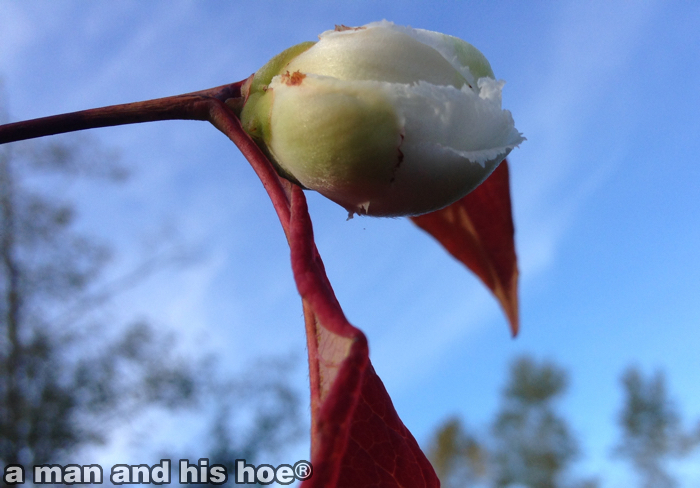
And what is this that is trying to bloom? A stewartia pseudocamellia. Nearly all the leaves are off the tree. Just a few dry, red leaves are left, and yet it’s trying to bloom? Maybe it’s roots have tapped into the grape vine’s roots and it is feeling tipsy. Oh please, oh please, just one more bloom. Plants can be like children. I don’t want to go to sleep yet. I don’t want to wait until spring.
-
What’s For Dinner?
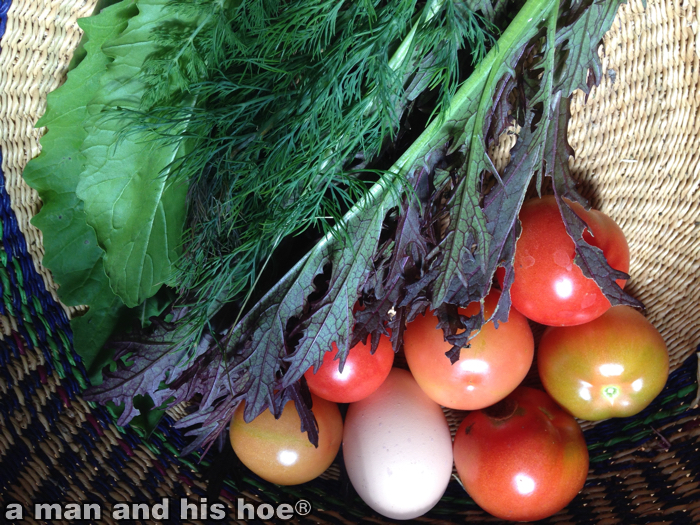
What’s for dinner? It’s a timeless question. The answer is out in the garden until a killing frost lays waste to the greens still flourishing into mid autumn. Some of the white flower beans are blissfully unaware of frost’s impending doom. They continue blooming even though there is no hope of them becoming beans. Originating from the mountains of Central America, they are used to eternal spring. In milder climates, they are perennials. Perhaps if I mulch their roots enough, they will sprout next spring.


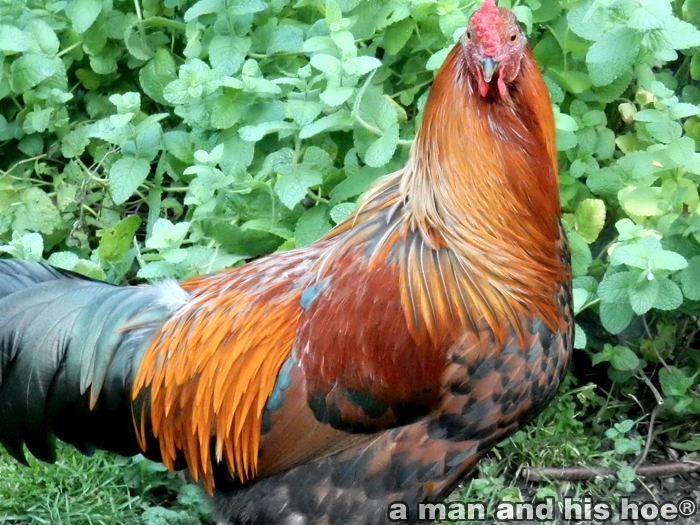
Soon to be on the dinner table, is this stunning rooster. Sadly for him, his coat of many colors can’t save him, not even his blue feather. He is too aggressive like his brother, who is currently in the freezer. He chases the hens too much. He fights the other roosters too much. “No” means nothing to a rooster.
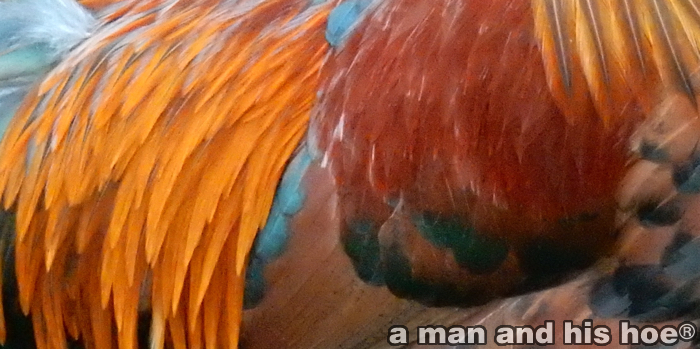
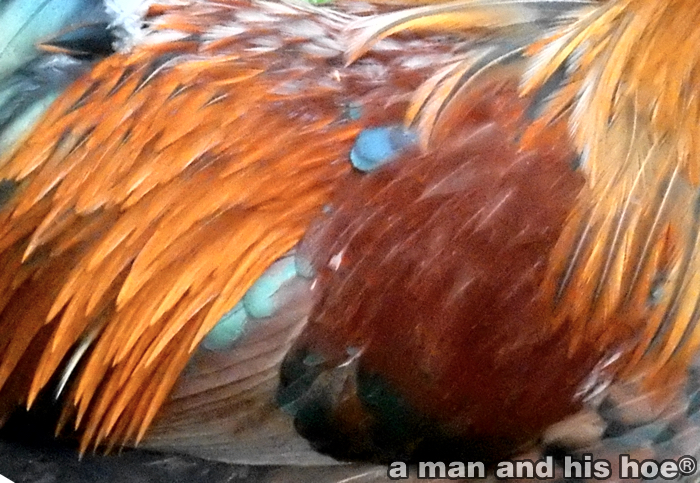
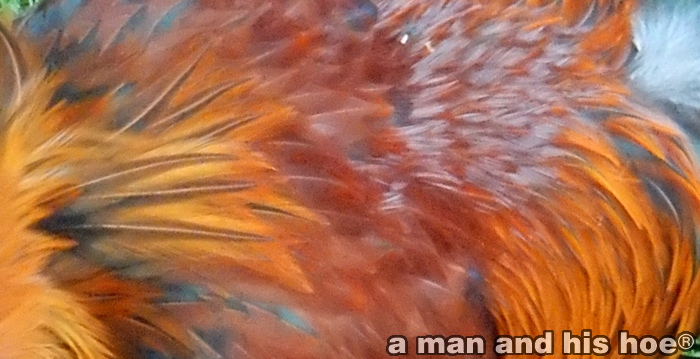
-
Maybe, Maybe Not
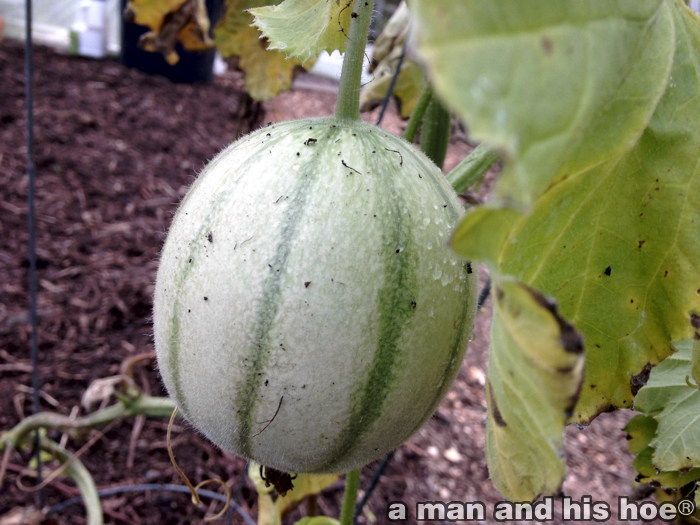
There’s one last artemis melon left in the hoop house. Will it ripen? Maybe, maybe not, but I’ll let it stay on the vine as long as it wants. I found a berry flower in bloom today. It’s too late to be pollinated and turn into a sweet berry, but it’s as beautiful as berry flowers in spring.
